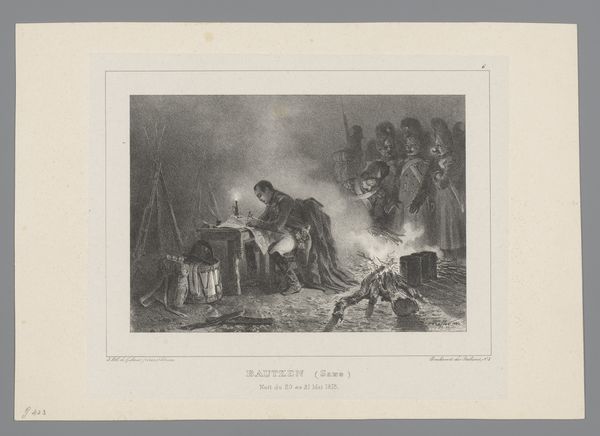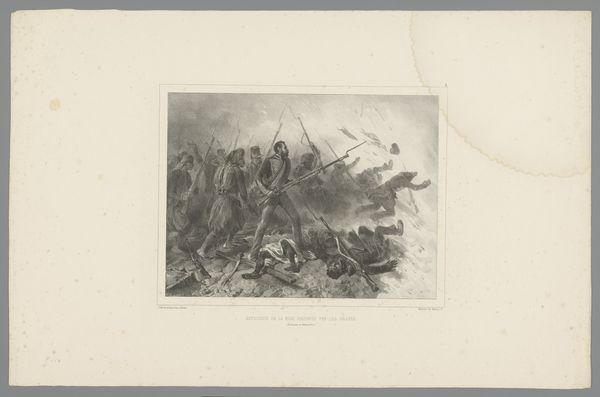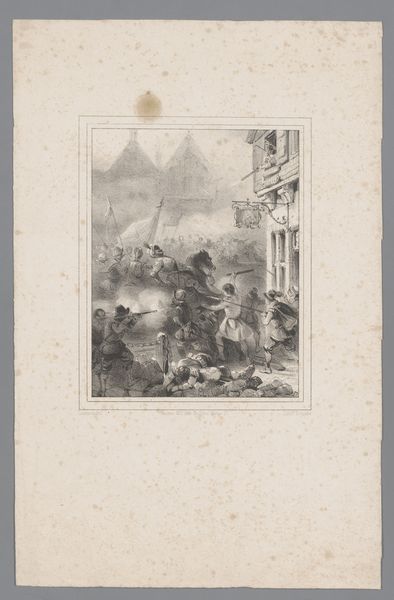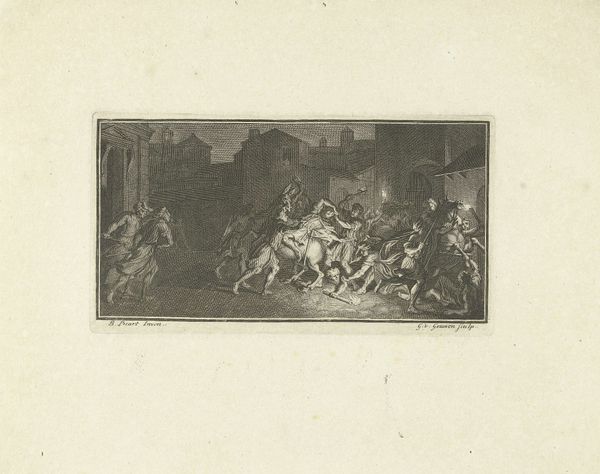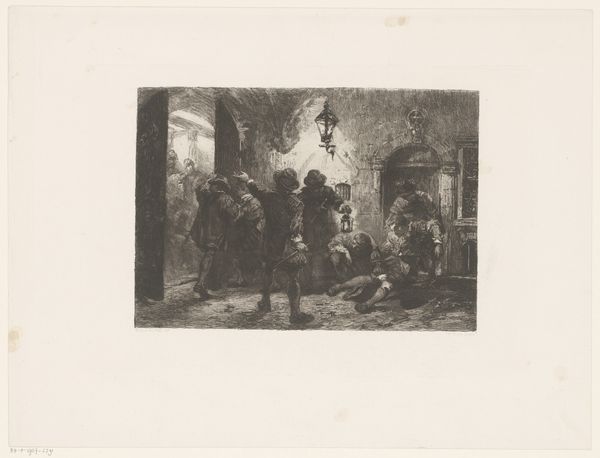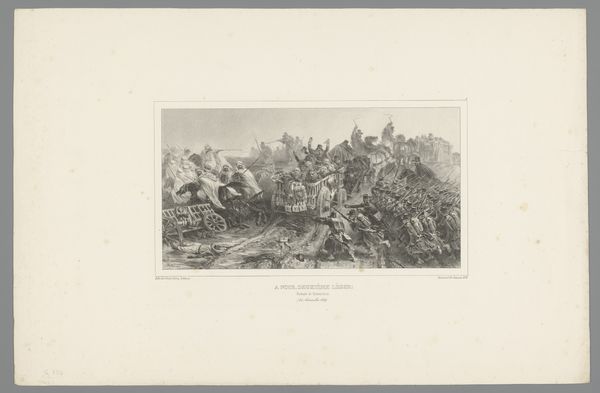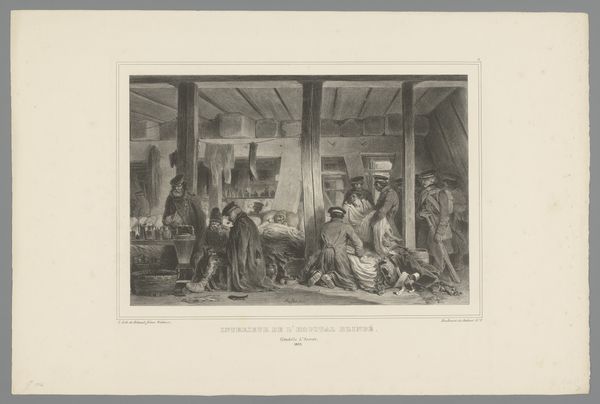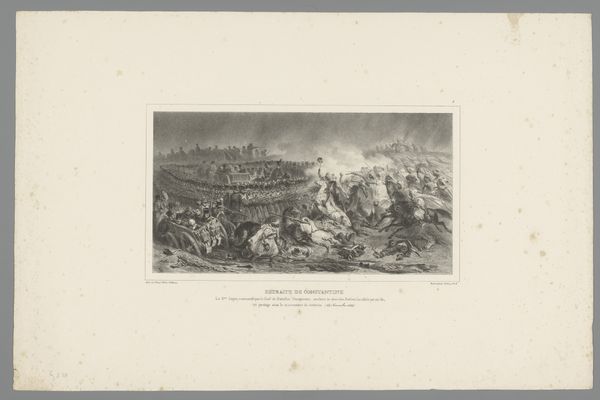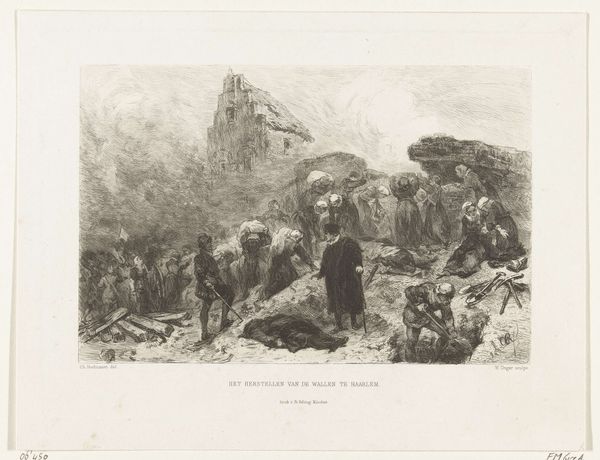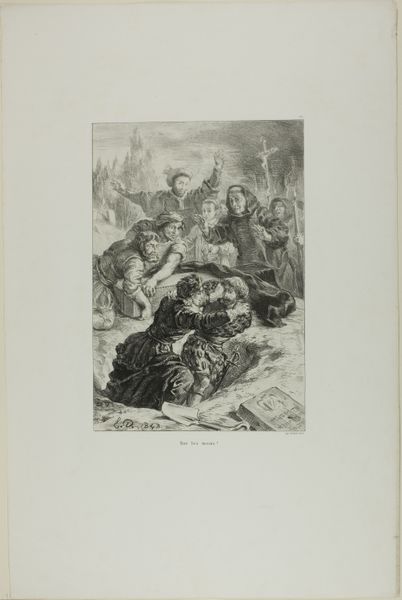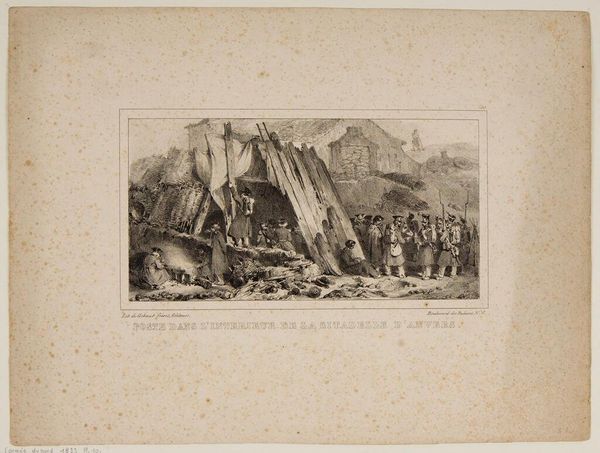
Franse soldaten in gevecht met de Arabieren, bevelhebber Th. le Blanc ligt dood op straat, 13 oktober 1837 1838
0:00
0:00
augusteraffet
Rijksmuseum
print, engraving
#
narrative-art
# print
#
figuration
#
romanticism
#
cityscape
#
genre-painting
#
history-painting
#
engraving
Dimensions: height 361 mm, width 550 mm
Copyright: Rijks Museum: Open Domain
Curator: Welcome to the Rijksmuseum. Before us, we have Auguste Raffet's print, "Franse soldaten in gevecht met de Arabieren, bevelhebber Th. le Blanc ligt dood op straat, 13 oktober 1837," created in 1838. Editor: My first impression is how dynamic it is. The stark blacks and whites create this sense of chaos and intense movement—like a snapshot from a nightmare. Curator: Indeed. The artist masterfully uses the engraving technique to depict a street battle, emphasizing the light and shadow play. Notice how Raffet employs diagonals to draw our eye into the scene, making it difficult to find a restful place within the composition. Editor: It’s also impossible to ignore the violent narrative. We see French soldiers engaged in combat with Arab fighters, the French commander lifelessly splayed on the cobblestones. I find myself considering the broader context of French colonialism and the often brutal encounters that characterized it. This isn’t simply a battle scene; it is, from my point of view, a visualization of power, oppression, and resistance. Curator: One cannot ignore Raffet’s romantic approach to war. Look at the carefully rendered textures. The gleam on the soldier's uniforms, the rough surfaces of the stone buildings—he transforms what could be a brutal, even ugly, scene into something with almost painterly beauty. It certainly speaks to his interest in genre and history painting, too. Editor: And those genre paintings often masked troubling political realities, don't they? This print aestheticizes conflict while, in my understanding, avoiding any critique of France's imperialist project. I mean, look how the bodies on the ground are rendered—dehumanized victims. It is the glorification of combat. Curator: That may be. But I appreciate how Raffet manipulates the tonal scale to convey depth and atmosphere, creating a sense of dramatic intensity within a fairly small printed area. It shows an extraordinary attention to detail. Editor: I concede, as a historical document, the image does have tremendous impact, sparking conversation and critique about colonialism and representation, perhaps then the beauty lies in its power to spark dialog, and not purely aesthetics. Curator: Absolutely. And from an artistic perspective, its composition invites discussion about technique and the romanticization of war, as well as the effects that period artwork still has in our modern museum experience.
Comments
No comments
Be the first to comment and join the conversation on the ultimate creative platform.
